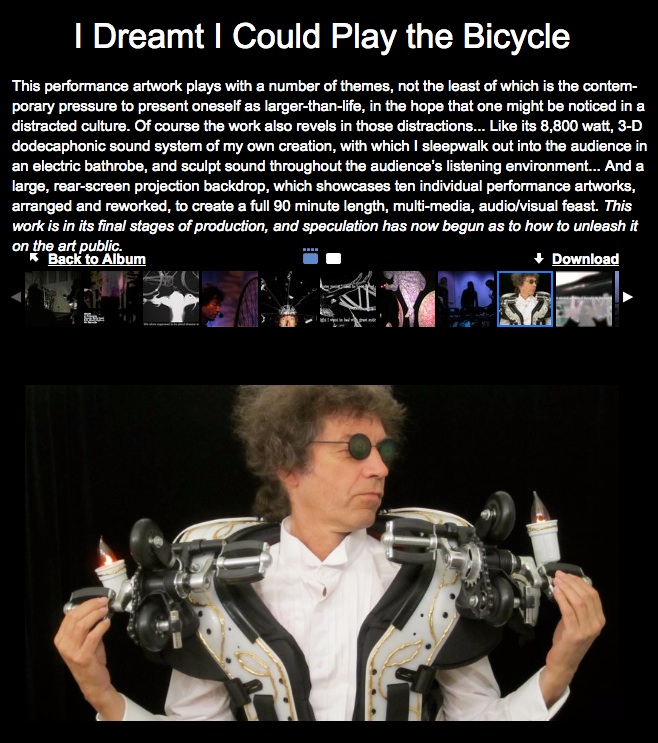Flann O’Brien wrote a comic novel. Kurt Wold made a performance piece. Bicycles figure in both.
Not everybody knows how I killed old Phillip Mathers, smashing his jaw in with my spade; but first it is better to speak of my friendship with John Divney because it was he who first knocked old Mathers down by giving him a great blow in the neck with a special bicycle-pump which he manufactured himself out of a hollow iron bar. …
Old Mathers lived alone. Divney knew on what evening and at what deserted stretch of road near his house we would meet him with his box of money. The evening when it came was in the depth of winter; the light was already waning as we sat at our dinner discussing the business we had in hand. Divney said that we should bring our spades tied on the crossbars of our bicycles because this would make us look like men out after rabbits; he would bring his own iron pump in case we should get a slow puncture. …
In the terrible situation I found myself, my reason could give me no assistance. I knew that old Mathers had been felled by an iron bicycle-pump, hacked to death with a heavy spade and then securely buried in a field. I knew also that the same man was now sitting in the same room with me, watching me in silence. His body was bandaged but his eyes were alive and so was his right hand and so was all of him. Perhaps the murder by the roadside was a bad dream.
Kurt Wold thinks of the bicycle as a “natural vehicle” for his art.
Aesthetically it engages the viewer immediately with its figurative suggestions and strong compositional geometries. And, because it is a functional machine with a commonly shared childhood experience, I felt it elicited a kinesthetic accessibility for the viewer. Folk wisdom claims that you never forget how to ride a bicycle.
I remember as a child being schooled on the inventive spirits of Thomas Edison, Benjamin Franklin, and the Wright Brothers, the latter who took the seminal machine of that time -the bicycle- and invented the airplane. Of course today’s advances in technology leave one about as uncomfortable as staring at the instrument panel of a jumbo jet. Human tools are rapidly converting human beings into human subjects, who regularly pray and curse at their cars and computers. In a somewhat Don Quixote fashion, I make these machines to remind myself and others what it means to be human, what restrictions are implied therein, and what dreams seek expression beyond.

